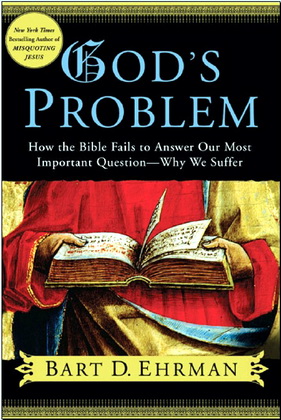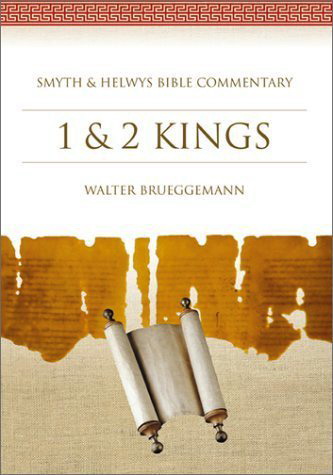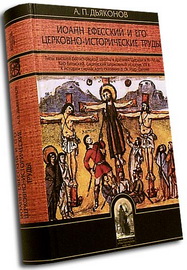
Brueggemann - Bible Commentary: 1 & 2 Kings

The books of First and Second Kings constitute the great “royal history” of Israel in the Old Testament. They trace the ups and downs of kingship all the way from the death of David (962) to the destruction of Jerusalem (587), with a brief addendum linked to the death of the Babylonian king Nebuchadnezzar in 562. I have used the term “royal history” to recognize at the outset that this literature is concerned with “royal” data, that is, the policies, actions, and destinies of the several rulers of these two ancient states.
In such an ancient patriarchal-royal society, it is clear that the future of the state and all of its members is linked to and largely determined by the future of its kings. The phrase “royal history,” however, also includes the term “history.” And, indeed, in Christian accounts of the Old Testament, these two books are regularly reckoned to be “history.” No doubt these books form the most reliable timeline we have for the monarchy in these ancient states and articulate the primary shape of that ancient past through which this ancient community in two states is most commonly understood. Indeed, the timeline of this material has largely been adopted as normative, as we lack any alternative presentation. We have no better sustained data than is provided in these books. At the same time, to term this literature “history” in any modern sense of an accurate “factual” account of that past is widely recognized to be deeply problematic. Thus it is a difficult question to determine in any particular instance whether this “historical” report in the text is “factually” reliable. The problem in part is that the data is confusing and unclear and does not always confirm what we think we know from other, albeit sparse, sources. That is, taken as “history,” the detail of this account is not consistently reliable.
The greater problem, however, is that the narrative does not intend to be “history” as we, in our modern modes, understand the term.
This narrative is not and does not purport to be a “factual account” of the monarchial past. Rather consistently the narrative “footnotes” its text in order to alert readers who want detailed “history” that they can go to the “sources” to check out the facts. These “sources”—now lost to us—are often specified: This narrative then is under no obligation to provide a full account of the “factual data,” but assumes that the curious reader can check that out in the library.
Thus our text is not “history.” It is, rather, an interpretive commentary upon that royal history or, as we might say, it is a “theology of history,” an attempt to understand the vagaries of lived public experience in that world with particular reference to YHWH, the God of Israel. This God is seen to be an active and decisive player in this lived history. This narrator has no interest in “royal history” as it might be articulated without reference to YHWH, and indeed the narrator believes that such an account is nonsensical and meaningless precisely because YHWH is decisive at every turn. For that reason, in the Jewish order of books in the Hebrew Bible these books are among the “Former Prophets” (along with Joshua, Judges, and Samuel) and are not offered at all as “history.”
Walter Brueggemann - Smyth & Helwys Bible Commentary: 1 & 2 Kings
Smyth & Helwys Publishing, Inc. 6316 Peake Road Macon, Georgia 31210-3960 1-800-747-3016
ISBN 1-57312-065-0
Walter Brueggemann - Smyth & Helwys Bible Commentary: 1 & 2 Kings - Contents
INTRODUCTION
OUTLINE
1 KINGS
1. Solomon’s Rise to Power 1 Kgs 1:1-53
2. Solomon’s Consolidation of Power 1 Kgs 2:1-46
3. Beginnings as a Pious, Wise King 1 Kgs 3:1-28
4. Royal Impressiveness 1 Kgs 4:1-34
5. Temple Preparations 1 Kgs 5:1-18
6. Temple Construction 1 Kgs 6–7
7. The Temple Dedicated and Made Operational 1 Kgs 8:1-66
8. An Interface of Theological Warning and Self-Congratulations 1 Kgs 9:1-28
9. The Global Economist 1 Kgs 10:1-29
10. When the Chickens Come Home to Roost 1 Kgs 11:1-43
11. An Urgent Political Settlement 1 Kgs 12:1-33
12. Ominous Prophetic Inscrutability 1 Kgs 13:1-34
13. Rival Kings, in Failure and in Death 1 Kgs 14:1-31
14. A Series of Undistinguished Monarchs 1 Kgs 15:1-32
15. Northern Upheavals 1 Kgs 15:33–16:34
16. Elijah, Man of Power for Life 1 Kgs 17:1-24
17. Troubler of Israel 1 Kgs 18:1-46
18. Letdown and Revival 1 Kgs 19:1-21
19. War, Diplomacy, and Prophetic Zeal 1 Kgs 20:1-43
20. A Clash over Land 1 Kgs 21:1-29
21. Ahab’s Last Venture 1 Kgs 22:1-53
2 KINGS
1. One More, King over Prophet 2 Kgs 1:1-18
2. A Transition in Prophetic Authority 2 Kgs 2:1-25
3. A Miscalculated War 2 Kgs 3:1-27
4. Elisha as a Transformative Force 2 Kgs 4:1-44
5. The Leprosy of Naaman, Healed and Reassigned 2 Kgs 5:1-27
6. Iron Floats 2 Kgs 6:1-7
7. Hidden Allies 2 Kgs 6:8-23
8. Good News Amid the Vagaries of War 2 Kgs 6:24–7:20
9. Land Restored 2 Kgs 8:1-6
10. The Sorry Future of Three Kings 2 Kgs 8:7-29
11. A Bloody, Prophet-Propelled Revolution 2 Kgs 9:1-37
12. The End of the Bloody Reign of Jehu 2 Kgs 10:1-36
13. Beginning Again with a Child King 2 Kgs 11:1-20
14. The Long Reign of Jehoash 2 Kgs 11:21–12:21
15. Kings, Prophet, and War in the North 2 Kgs 13:1-25
16. On Amaziah and Jereboam II 2 Kgs 14:1-29
17. Two Judean Kings, a Series of Northern Nondescripts 2 Kgs 15:1-38
18. Ahaz as a Willing Accomodator 2 Kgs 16:1-20
19. The End of the Northern Kingdom 2 Kgs 17:1-41
20. Hezekiah’s Reform and the Assyrian Threat 2 Kgs 18:1-37
21. A Final Threat and Complete Deliverance 2 Kgs 19:1-37
22. The End of Hezekiah: The Long-Term End of Jerusalem 2 Kgs 20:1-21
23. Manasseh and His Son 2 Kgs 21:1-26
24. Josiah, Man of Torah 2 Kgs 22:1-20
25. The Rule and Death of Josiah 2 Kgs 23:1-30
26. Four Pitiful Kings 2 Kgs 23:31–25:7
27. The Final Humiliation 2 Kgs 25:8-21
28. Two Proximate Conclusions 2 Kgs 25:22-30
BIBLIOGRAPHY
INDEX OF MODERN AUTHORS
1 KINGS INDEX OF SIDEBARS
2 KINGS INDEX OF SIDEBARS
INDEX OF SCRIPTURES
INDEX OF SUBJECTS DISCUSSED




Комментарии (1 комментарий)
Огромное спасибо!!!